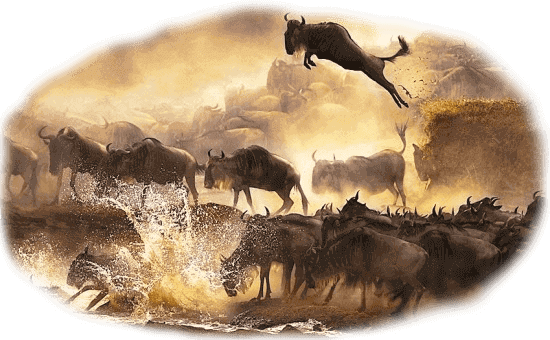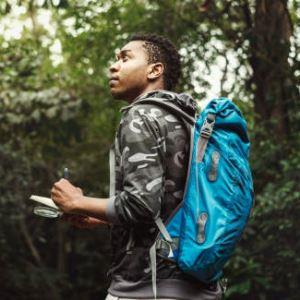 For Indian travelers seeking a unique cultural experience, visiting a Maasai village in Kenya offers more than just a detour from wildlife safaris it invites you into a centuries-old way of life. Rooted in pastoral traditions, the Maasai are known for their striking attire, welcoming rituals, and deep connection to nature. Indian tourists often find a sense of familiarity in the Maasai's community-first mindset, spiritual customs, and oral storytelling practices that echo India's own rural traditions. From the moment you arrive, the village atmosphere captivates. Colorful beadwork, rhythmic chanting, and jumping dances create a vibrant introduction. You can participate in daily tasks like milking cows or making fire using sticks activities that are not performative but real expressions of life. These moments form bonds that feel sincere and lasting. Language is no barrier. Many guides speak English or even some Hindi. Dietary requirements vegetarian, Jain, or otherwise can be met if requested in advance. Respect and cultural awareness are key: always ask before taking photographs, dress modestly, and approach the experience with openness rather than a tourist checklist. Traveling from Nairobi is easy, with road trips lasting 3 to 6 hours or short domestic flights available. The best times to visit are during Kenya’s dry seasons: June to October or December to March, when roads are passable and festivals may coincide with Indian school holidays. Avoid April and May when the rainy season makes access more difficult. The impact of your visit goes beyond cultural exchange. Buying crafts directly from artisans supports local economies. Staying in eco-lodges staffed by villagers ensures your money stays within the community. Guided by ethical practices, you help preserve this culture rather than commodify it. A visit to a Maasai village fosters mutual respect and deeper global understanding. Indian travelers often leave with new friends, stories, and a renewed sense of how tradition and modern life can coexist. With thoughtful planning and the right guide with Homejoy Safari Adventures, this journey becomes not just a memory, but a meaningful bridge between worlds.
For Indian travelers seeking a unique cultural experience, visiting a Maasai village in Kenya offers more than just a detour from wildlife safaris it invites you into a centuries-old way of life. Rooted in pastoral traditions, the Maasai are known for their striking attire, welcoming rituals, and deep connection to nature. Indian tourists often find a sense of familiarity in the Maasai's community-first mindset, spiritual customs, and oral storytelling practices that echo India's own rural traditions. From the moment you arrive, the village atmosphere captivates. Colorful beadwork, rhythmic chanting, and jumping dances create a vibrant introduction. You can participate in daily tasks like milking cows or making fire using sticks activities that are not performative but real expressions of life. These moments form bonds that feel sincere and lasting. Language is no barrier. Many guides speak English or even some Hindi. Dietary requirements vegetarian, Jain, or otherwise can be met if requested in advance. Respect and cultural awareness are key: always ask before taking photographs, dress modestly, and approach the experience with openness rather than a tourist checklist. Traveling from Nairobi is easy, with road trips lasting 3 to 6 hours or short domestic flights available. The best times to visit are during Kenya’s dry seasons: June to October or December to March, when roads are passable and festivals may coincide with Indian school holidays. Avoid April and May when the rainy season makes access more difficult. The impact of your visit goes beyond cultural exchange. Buying crafts directly from artisans supports local economies. Staying in eco-lodges staffed by villagers ensures your money stays within the community. Guided by ethical practices, you help preserve this culture rather than commodify it. A visit to a Maasai village fosters mutual respect and deeper global understanding. Indian travelers often leave with new friends, stories, and a renewed sense of how tradition and modern life can coexist. With thoughtful planning and the right guide with Homejoy Safari Adventures, this journey becomes not just a memory, but a meaningful bridge between worlds.
Quick Travel Info for Indian Tourists Visiting a Maasai Village
| Feature | Details |
|---|---|
| Visa Requirement | e-Visa for Indians, apply online via eCitizen |
| Language Spoken | Maa, Swahili; Guides available in English/Hindi |
| Recommended Vaccinations | Yellow Fever, Typhoid, Hepatitis A & B, Tetanus |
| Common Dietary Accommodations | Vegetarian, Jain options on request |
| Currency Exchange | 1 INR ≈ 1.50 KES (subject to change) |
| Cultural Etiquette | Ask before photos, dress modestly |
| Mobile Connectivity | 3G/4G in most areas; Safaricom works best |
| Time Zone | EAT (GMT+3) |
What Indian Travelers Can Expect from a Maasai Village Tour in Kenya
A visit to a Maasai village in Kenya offers Indian travelers an unforgettable cultural experience rooted in authenticity and mutual respect. The Maasai people are one of Kenya's most iconic indigenous communities, known for their tall stature, vibrant red garments, and strong oral traditions. For Indian tourists, the journey into a Maasai homestead is not simply sightseeing it is immersion in a living heritage. Upon arrival, visitors are welcomed with traditional songs and dances. The villagers perform the famous adumu, or jumping dance, with grace and strength. This display isn't staged for tourism; it's part of their identity. You are invited not just to watch but to participate, deepening the cultural exchange. Inside the village, daily life unfolds openly. You may learn how to make fire from twigs or how women construct homes from a mix of mud, cow dung, and sticks a skill passed down through generations. Indian travelers often notice parallels between Maasai customs and India’s rural traditions. Respect for elders, close-knit families, and livestock-centric economies resonate across continents. These shared values create a bridge of understanding that enriches the visit beyond sightseeing. Moreover, dietary accommodations such as vegetarian or Jain meals can usually be arranged in advance, especially when traveling with operators like ours. Language is rarely a barrier. Guides often speak fluent English and can offer basic explanations in Hindi when needed. Communication is further eased by the warmth and hospitality of the villagers, who are accustomed to engaging with international visitors. The journey from Nairobi to a Maasai village typically takes 3 to 6 hours by road, depending on the village's location. Alternatively, short domestic flights are available to airstrips near the Maasai Mara. The best seasons for travel are from June to October or December to March, avoiding the long rains in April and May. Indian tourists also have a role to play in supporting the Maasai ethically. Purchasing handmade crafts directly from artisans helps sustain traditional skills. Participating in community-led tours ensures that the economic benefits remain local. Avoid exploitative photography or expectations of staged experiences the goal is respectful engagement, not consumption. In essence, what Indian travelers can expect is a window into a lifestyle shaped by endurance, spirituality, and tradition. It’s a meaningful cultural dialogue that leaves both host and guest enriched. With thoughtful planning and the guidance of experienced local operators, this journey becomes not just a tour, but a powerful memory that lingers long after the return flight.
Best Time for Indian Tourists to Visit a Maasai Village in Kenya
Understanding the best time to visit a Maasai village in Kenya is crucial for Indian travelers planning a meaningful cultural journey. Kenya experiences two main dry seasons and two rainy seasons, each influencing accessibility, comfort, and the vibrancy of village life. Indian tourists benefit most from aligning their trip with Kenya's dry months and considering Indian school holidays for a seamless travel experience. Below is an expanded breakdown of each suggested time frame:
- June to October: These are the long dry months, widely considered the best time to visit Kenya for both wildlife safaris and cultural excursions. Roads are dry and passable, village activities are in full swing, and there's a lower risk of travel disruptions. This season also coincides with the Great Migration in the Maasai Mara, allowing travelers to combine village tours with one of the world's most spectacular wildlife events.
- December to March: Following the short rains of November, this period sees the landscape transformed into a lush and green setting. Clear skies return, and cultural festivals often take place around Christmas and the New Year. For Indian tourists, this is an opportune time as it aligns with winter holidays, making it ideal for family travel. The climate is warm but manageable, and local communities are generally more accessible for interactive visits.
- Plan around school holidays in India: Travel during Indian school breaks especially in May-June and December is advantageous for family groups. These times also allow Indian families to engage more fully with village activities as a shared learning experience. Additionally, travel packages and itineraries are often curated with families in mind during these periods, offering better coordination and child-friendly options.
By aligning your travel dates with these recommended periods, you ensure not only favorable weather but also the most authentic and fulfilling interaction with the Maasai community. Planning ahead with a knowledgeable local operator helps ensure that your journey is smooth, safe, and respectful of the cultural context.
How to Reach a Maasai Village from Major Cities in Kenya
Reaching a Maasai village in Kenya is a journey that blends adventure with convenience, particularly for Indian travelers looking to explore the heart of East Africa. While many Maasai communities live in remote areas, getting there from Kenya's major cities is relatively straightforward when planned in advance. Depending on your route and time constraints, you can choose between overland travel and domestic flights. The most common starting point is Nairobi, Kenya’s capital and primary entry hub for international travelers. From Nairobi, several Maasai villages particularly those near the Maasai Mara National Reserve are accessible by road. The journey takes around 5 to 6 hours in a 4x4 vehicle, depending on weather and road conditions. The drive, while long, is scenic and offers glimpses of rural life along the way. Travel through the Great Rift Valley, small trading towns, and eventually into Maasai territory offers a gradual cultural immersion. For those looking to reduce travel time, domestic flights from Nairobi’s Wilson Airport are a popular option. Flights to airstrips like Keekorok, Ol Kiombo, and Siana Springs take roughly 45 minutes. These flights are usually followed by a short transfer to your village destination, often arranged by your tour operator. We can coordinate these services, ensuring that your transition from urban Kenya to rural Maasailand is smooth and informative. If you are traveling from Mombasa, a coastal city, the best route is to fly to Nairobi and then either drive or take a connecting domestic flight to the Maasai Mara region. While there are charter flight options from Mombasa to the Mara, they are less frequent and more expensive. Travelers from Kisumu or Nakuru, cities near Lake Victoria and the Rift Valley respectively, can access the Maasai regions by road with the help of a reliable guide and a well-maintained vehicle. For Indian tourists, it’s helpful to know that many tour providers offer packages that include transport, making the logistics far easier. This is particularly useful for families or first-time visitors. Vehicles used are typically safari-ready, with pop-up roofs and air conditioning, designed for both comfort and sightseeing. During travel, bilingual guides help bridge the gap between cultures, offering rich explanations of the regions you traverse. Overall, reaching a Maasai village is part of the adventure and a prelude to the cultural experience that awaits. Whether you choose the road or the skies, the journey is rewarding in itself, opening doors to authentic encounters and unforgettable memories.
Top Cultural Experiences in a Maasai Village for Indian Visitors
A visit to a Maasai village offers Indian travelers a dynamic and immersive opportunity to engage with a living culture that is both distinct and resonant. These experiences are not performances crafted for tourism but authentic moments from daily Maasai life. Indian guests often discover surprising similarities with Indian rural traditions, making these interactions feel familiar yet refreshingly different. Below are some of the most enriching cultural encounters you can expect:
- Traditional Song and Dance: Upon arrival, guests are welcomed through the adumu, or warrior jumping dance, accompanied by rhythmic chants. These dances symbolize strength, unity, and celebration. Indian visitors are encouraged to join in, making the moment interactive and memorable.
- Beadwork Workshops: Maasai women are renowned for their colorful beadwork, which tells stories of age, status, and community roles. In these hands-on sessions, travelers can observe and try crafting simple patterns, gaining insight into the meaning behind each color and design.
- Milking Cows and Herding Goats: Livestock is central to Maasai life. Guests may assist in milking cows or guiding goats back to their enclosures. These interactions reflect the community's self-sufficiency and highlight the importance of pastoralism.
- Fire-Making Demonstrations: Watch as elders ignite fire using traditional tools sticks and dried grass with no modern aid. This practice underscores the Maasai's resilience and their reliance on ancestral knowledge.
- House Construction Tours: Step inside an "enkaji," a traditional Maasai home built by women using a mixture of mud, cow dung, and branches. Learning how these homes are constructed provides a window into gender roles, environmental adaptation, and architectural ingenuity.
Together, these experiences offer more than cultural insight; they promote respectful engagement and shared learning. Indian travelers often leave not just entertained but deeply moved by the Maasai's humility, strength, and unbroken link to their heritage.
Essential Travel Tips for Indians Visiting Maasai Villages
Planning a visit to a Maasai village in Kenya is an enriching experience for Indian travelers, but it also requires cultural mindfulness and practical preparation. The key to a rewarding and respectful encounter lies in understanding local customs, managing expectations, and being physically prepared for rural conditions. Below are essential travel tips designed specifically for Indian visitors to make the journey smooth, meaningful, and memorable:
- Respect Local Customs and Dress Modestly: Modesty in dress is highly valued in Maasai culture. Women should consider wearing long skirts or trousers and covering shoulders, while men should avoid sleeveless tops. Such attire not only shows respect but also allows for easier integration into the village environment.
- Learn Basic Swahili Greetings: A few words in Swahili like "Jambo" (Hello), "Asante" (Thank you), and "Karibu" (Welcome) can go a long way in breaking the ice and fostering goodwill. Though many guides speak English or Hindi, using local greetings builds a deeper connection.
- Pack Essentials for Remote Travel: Carry sunscreen, mosquito repellent, a reusable water bottle, and hand sanitizer. Closed-toe shoes are a must, as village terrain can be uneven and livestock roam freely. A small medical kit with common over-the-counter remedies is also advisable.
- Carry Kenyan Shillings for Local Purchases: Villages often lack card payment facilities, so it’s best to bring cash for purchasing beadwork, crafts, or making small contributions. Exchange currency at official bureaus or major banks in Nairobi or Mombasa before traveling inland.
- Be Mindful of Photography: Always ask before taking photos of individuals or private spaces. Many Maasai view photography as intimate and personal. Respecting this boundary reflects well on you and enhances your standing as a thoughtful guest.
- Avoid Single-Use Plastics: Kenya has strict environmental laws banning plastic bags. Carry reusable items like cloth bags, metal bottles, and eco-friendly toiletries. This aligns with both Maasai environmental values and national regulations.
- Choose Ethical Tour Operators: Booking through certified operators ensures you travel with guides who prioritize cultural respect and community benefit. It also means safer, well-coordinated transport and accommodation.
- Understand the Rhythm of Rural Life: The pace in Maasai villages is slower than urban India. Be patient and embrace the unhurried nature of interactions and activities. These moments allow for genuine reflection and immersion.
Following these tips can turn a simple tour into a truly transformative experience. With a spirit of curiosity and respect, Indian travelers can engage deeply with the Maasai way of life, building bridges that transcend language and geography.
How Indian Travelers Can Support the Maasai Community Ethically
For Indian travelers seeking deeper meaning in their journeys, supporting the Maasai community ethically is as important as experiencing its cultural richness. Ethical travel emphasizes respect, sustainability, and mutual benefit. When done right, it strengthens cultural heritage and empowers the host community without turning their traditions into a commodity. The most immediate way to support the Maasai community is by purchasing handcrafted items directly from artisans. Whether it’s beadwork, jewelry, or textiles, these pieces are not only beautiful but carry cultural significance. Buying directly ensures that your money goes to the creators rather than middlemen. It supports livelihoods, particularly for Maasai women, who are often the primary artisans in their households. Another vital avenue is choosing community-based tourism initiatives. Many villages offer immersive experiences where visitors can learn about Maasai life while ensuring that the community retains full ownership of the experience. This includes homestays, locally run cultural centers, and guided village tours led by Maasai hosts. When booked through ethical operators, these experiences are coordinated to prioritize the interests of the community. Photography, while tempting, must be approached with care. Always ask for permission before taking pictures. Maasai individuals may see unsolicited photography as intrusive or disrespectful. Ethical tourism is about mutual understanding and shared dignity, not exploitation for social media content. Donations can also be meaningful but should be channeled properly. Rather than giving handouts, inquire through your guide about initiatives that support long-term goals like girls’ education, water projects, or healthcare access. Supporting local NGOs or school-based programs ensures accountability and impact. Accommodation choices matter too. Staying in eco-lodges or community-managed campsites means your money supports both the local economy and environmental conservation. These properties often employ villagers, source food locally, and use sustainable practices aligned with Maasai values. Indian travelers should also embrace a humble, learner’s mindset. The goal is not to observe from afar but to engage with openness, patience, and sincerity. Simple gestures sharing a story, tasting traditional food, or joining in a dance contribute to mutual respect. Ethical support goes beyond money. It’s about choosing conscious, compassionate travel practices that leave both the guest and host better understood and uplifted. For Indian visitors, whose own culture values hospitality and community, this respectful engagement with the Maasai can become a deeply moving and transformational part of their African journey.
Why Maasai Village Tours Appeal to Indian Sensibilities
 Maasai village tours resonate deeply with Indian travelers, largely due to the cultural values shared across these two diverse but spiritually connected communities. For many Indians, the Maasai way of life feels both intriguing and familiar. The emphasis on family structure, reverence for elders, storytelling traditions, and a rural, community-centered lifestyle mirrors the rhythm of Indian village life. This sense of familiarity fosters a genuine connection, making the cultural experience less foreign and more relatable. One key reason for this alignment is the spiritual grounding that both cultures maintain. The Maasai people live in close harmony with nature and have spiritual practices embedded in everyday life, much like India's own rural traditions. From prayer rituals to seasonal ceremonies, Indian travelers often find the Maasai belief systems reminiscent of indigenous Indian customs, allowing for moments of introspection and mutual respect. The vibrancy of Maasai attire bright reds, beadwork, and symbolic patterns also appeals to Indian aesthetic sensibilities. In India, color holds profound cultural meaning, used to express everything from emotion to social status. Similarly, the Maasai adorn themselves in ways that are both beautiful and symbolic, making cultural expression a shared experience. Indian tourists also value hospitality, which the Maasai exhibit in abundance. Being welcomed with dance, food, and warmth mirrors the Indian practice of treating guests as a form of divine presence. This shared understanding of hospitality transforms the experience from one of observation into participation. Another connection lies in the respect for oral history. Both Indian and Maasai cultures have passed down wisdom through generations by word of mouth. Stories, songs, and fables carry moral lessons, history, and identity. Indian visitors often find themselves engrossed in Maasai storytelling, recognizing the universal human themes they contain. Many Indian travelers are drawn to slow travel journeys that allow time for reflection, learning, and personal transformation. A Maasai village tour provides exactly that. It offers a deliberate pause, away from modern chaos, to witness a way of life that prizes simplicity, resilience, and authenticity. Maasai village tours appeal to Indian sensibilities because they offer more than cultural contrast; they offer resonance. They stir memories, draw parallels, and encourage a respectful exchange. With the right guidance and an open heart, this experience becomes more than a tour it becomes a deeply human connection.
Maasai village tours resonate deeply with Indian travelers, largely due to the cultural values shared across these two diverse but spiritually connected communities. For many Indians, the Maasai way of life feels both intriguing and familiar. The emphasis on family structure, reverence for elders, storytelling traditions, and a rural, community-centered lifestyle mirrors the rhythm of Indian village life. This sense of familiarity fosters a genuine connection, making the cultural experience less foreign and more relatable. One key reason for this alignment is the spiritual grounding that both cultures maintain. The Maasai people live in close harmony with nature and have spiritual practices embedded in everyday life, much like India's own rural traditions. From prayer rituals to seasonal ceremonies, Indian travelers often find the Maasai belief systems reminiscent of indigenous Indian customs, allowing for moments of introspection and mutual respect. The vibrancy of Maasai attire bright reds, beadwork, and symbolic patterns also appeals to Indian aesthetic sensibilities. In India, color holds profound cultural meaning, used to express everything from emotion to social status. Similarly, the Maasai adorn themselves in ways that are both beautiful and symbolic, making cultural expression a shared experience. Indian tourists also value hospitality, which the Maasai exhibit in abundance. Being welcomed with dance, food, and warmth mirrors the Indian practice of treating guests as a form of divine presence. This shared understanding of hospitality transforms the experience from one of observation into participation. Another connection lies in the respect for oral history. Both Indian and Maasai cultures have passed down wisdom through generations by word of mouth. Stories, songs, and fables carry moral lessons, history, and identity. Indian visitors often find themselves engrossed in Maasai storytelling, recognizing the universal human themes they contain. Many Indian travelers are drawn to slow travel journeys that allow time for reflection, learning, and personal transformation. A Maasai village tour provides exactly that. It offers a deliberate pause, away from modern chaos, to witness a way of life that prizes simplicity, resilience, and authenticity. Maasai village tours appeal to Indian sensibilities because they offer more than cultural contrast; they offer resonance. They stir memories, draw parallels, and encourage a respectful exchange. With the right guidance and an open heart, this experience becomes more than a tour it becomes a deeply human connection.



